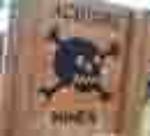Hi!
Working with resin is not so different compared to "normal" plastic.
Before you do anything, clean all resin parts in some dishing detergent to get rid of mould releasing substances.
Let dry overnight.
You must use a CA glue as the ordinary plastic glue doesn´t work here.
I use only CA, but some also uses epoxy glues, this will work for larger surfaces and getting a longer time to adjust the alignment.
For smaller surfaces like a cockpit, I use liquid CA or/and a CA Gel for smaller etched parts.
You´ll have to cut and sand the resin, be careful to avoid the dust as this is very unhealthy to get in your lungs!
Always work in a well ventilated space or use water to reduce the dust.
The plastic is not dangerous, but the fine dust can be.
Beware of the fit with these parts!
They are often designed to a specific kit, but the fit is not always as good as the plastic components!
Sand, file and dry fit are the most important things here!
Go slowly and be careful, resin is a VERY brittle type of plastic and breaks all too easy!
You can paint by brush and get a decent result.
But you would be amazed what a simple airbrush can do!
Good luck with your cockpit and please show us your model!
Cheers!



Stefan E





















